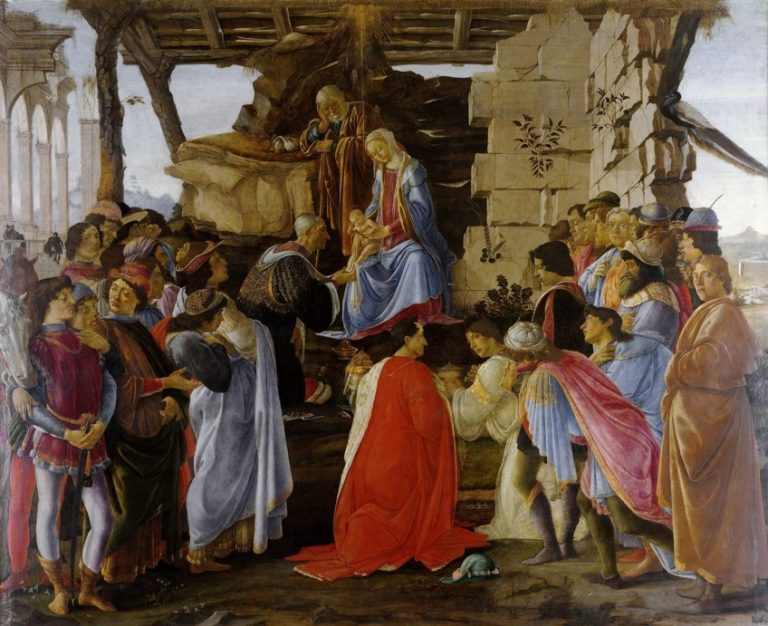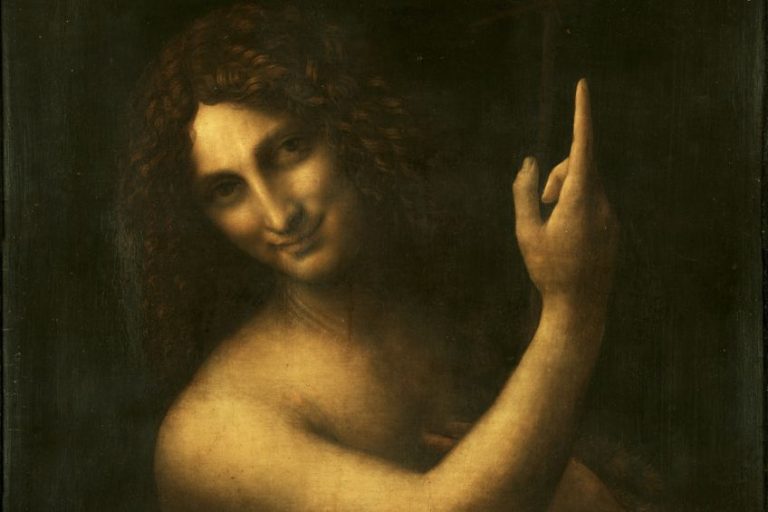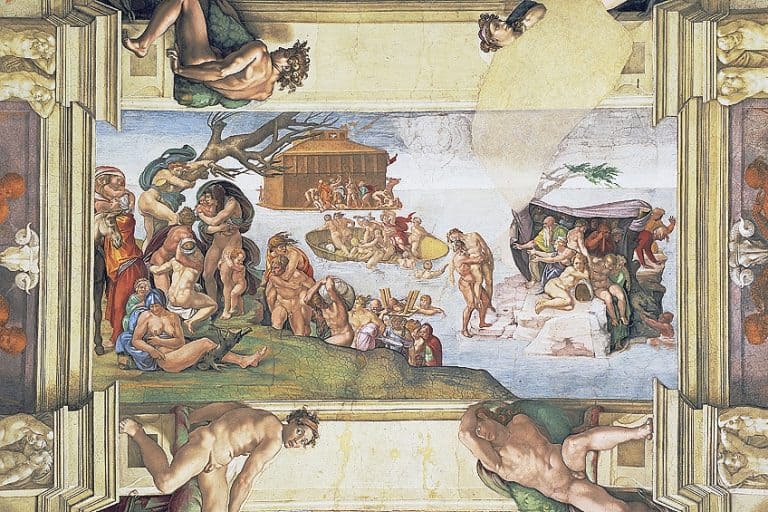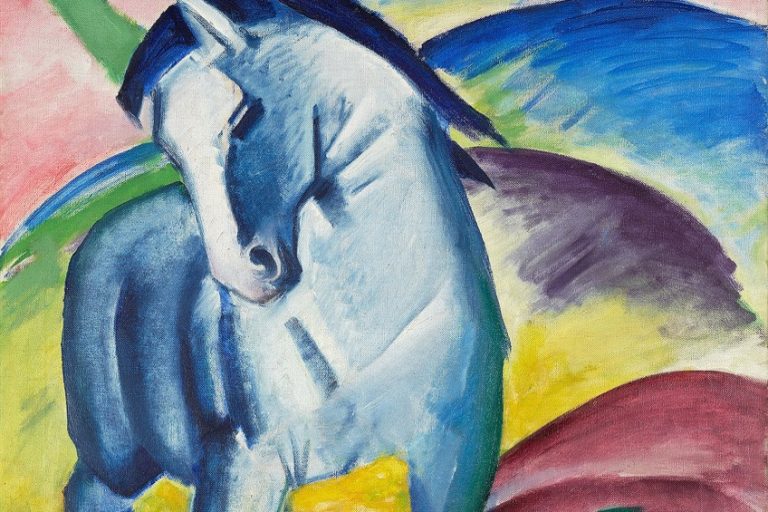“Water Serpents II” by Gustav Klimt – A Painting Analysis
Water Serpents II, created by Gustav Klimt between 1904 and 1907, stands as a testament to the artist’s fascination with the ethereal beauty and fluidity of the female form. This opulent masterpiece, adorned with gold leaf and vibrant colors, epitomizes Klimt’s signature Art Nouveau style. The painting captures a dreamlike underwater world where sensuous, intertwined female figures, adorned with elaborate jewelry and flowing hair, exude a sense of mystical allure and serenity. Water Serpents II is celebrated not only for its aesthetic splendor but also for its innovative use of mixed media, combining oil, gold, and silver on canvas, which creates a luminous, almost otherworldly effect. Today, it remains one of Klimt’s most revered works, embodying his artistic vision and the turn-of-the-century Viennese avant-garde movement.
Key Takeaways
- Water Serpents II is a testament to Gustav Klimt’s exploration of femininity and mythological symbolism.
- The painting represents a significant departure from traditional depictions of women in art, highlighting Klimt’s role in the Vienna Secession.
- Analysis of the artwork provides insight into the historical context and the significance of the piece in Klimt’s oeuvre.
Context and Background
| Artist | Gustav Klimt (1862 – 1918) |
| Date Created | 1904-1907 |
| Medium | Oil on canvas |
| Genre | Symbolism and Art Nouveau |
| Period/Movement | Vienna Secession |
| Dimensions (cm) | 80 x 145 |
| Series/Versions | Part of the Water Serpents series |
| Where Is It Housed? | Private collection in Asia |
| What It Is Worth | Estimated over $150 million (based on recent private sales) |
Gustav Klimt, the Austrian symbolist painter renowned for his contribution to the Vienna Secession movement, created the visually arresting piece, Water Serpents II, during the early 20th century. This artwork, rich in erotic symbolism, showcases Klimt’s fascination with the female form, intertwining mythological motifs and sensuous representation against a backdrop of vibrant, flowing patterns. The painting, much like its predecessor Water Serpents I, focuses on the beauty of the female body, melding it with the aquatic theme to create an almost dream-like quality that’s both captivating and thought-provoking.

While Water Serpents II reflects Klimt’s signature use of gold leaf and intricate detail, it also diverges into a realm of deep blue-green hues that evoke the painting’s aquatic title. The subjects, depicted with serpentine bodies, are entwined in an embrace that simultaneously conveys sensuality and mystery. This painting is a testament to Klimt’s continuous exploration of female mystique and embodies a significant shift away from the traditional portrayal of women in the art of his time, presenting them as powerful and enigmatic beings.
The Artist and His Legacy
Gustav Klimt, a renowned Austrian painter, became one of the most prominent figures of the early 20th century art scene in Vienna. His work is marked by a rich use of color, intricate ornamentation, and often, complex themes surrounding femininity and sexuality. Klimt co-founded the Vienna Secession, a group that sought to break away from traditional art.
He left an indelible mark on Austrian culture, influencing generations of artists.
Cultural Significance in Austria
In Austria, particularly Vienna, Klimt’s art is inseparable from the cultural zeitgeist of the time. Vienna at the turn of the century was a hub of intellectual and artistic activity, which Klimt was deeply involved in. His works, including Water Serpents II, captured the spirit of fin-de-siècle Vienna and its breakaway from conservatism, thus holding substantial cultural significance.

The Golden Phase
Water Serpents II falls within what is commonly known as Klimt’s Golden Phase, characterized by:
- Use of real gold leaf: It is identified by the application of actual gold leaf to his work.
- Byzantine inspiration: Influences ranging from Byzantine mosaics to Japanese art.
Other notable works from this period include The Kiss and Portrait of Adele Bloch-Bauer I.
This phase is often seen as the peak of Klimt’s artistic career, with Water Serpents II exhibiting many of the style’s hallmarks, such as intricate patterns and a focus on the aesthetics of eroticism.
Artwork Analysis
Gustav Klimt’s Water Serpents II is a captivating oil on canvas that exhibits masterful use of color and pattern to communicate complex themes.

Imagery and Symbolism
Water Serpents II is rich in symbolic content, merging human figures with serpentine forms to create an alluring sense of mystique. The intertwining of the feminine figures suggests themes of intimacy and unity.
Their representation—simultaneously sensual and abstract—reflects Klimt’s preoccupation with the feminine form and his tendency to imbue his subjects with a sense of depth and enigma.

Color and Pattern Usage
The usage of color in Water Serpents II is both vibrant and meaningful, with hues that range from deep greens and blues to shimmering golds. These colors serve to not only evoke the aquatic theme but also to highlight the various details and patterns within the piece.
Klimt’s technique—particularly his signature gold-leaf application—creates a patterned tapestry that commands attention and encourages closer examination of the intricate detail and lavish ornamentation characteristic of his work during this period.

Historical Value and Transaction
Water Serpents II is a prominent work by Gustav Klimt, acclaimed for its exquisite execution and convoluted past. This piece has navigated through tumultuous historical episodes, from wartime plunder to high-profile auctions. The painting Water Serpents II by Gustav Klimt has a storied auction history, evidencing its high demand among collectors. It has commanded attention in the art market, notably when Dmitry Rybolovlev purchased the piece.
The transaction involved in acquiring the painting was codenamed “Cottonmouth” by Sotheby’s.
Museum Quality and Ownership
Water Serpents II is recognized for its museum quality, both in its craftsmanship and enduring historical significance. Ownership has changed hands multiple times, including during World War II when the painting was seized by the Nazis. Following restitution, it resurfaced on the international art market.
- Period: The work was created during the artist’s Golden Period and is a testament to Klimt’s mastery of the oil painting medium.
- Size: It is notable for its size, which contributes to its grandeur and impact.
- Material: Utilizing oil on canvas, Water Serpents II exemplifies Klimt’s luxurious use of material and color to portray sensual forms.
Recent transactions reflect the artwork’s high value, with figures reported around $112 Million, underscoring its immense worth and the allure of Klimt’s oeuvre.

Water Serpents II by Gustav Klimt is a masterpiece that encapsulates the artist’s pioneering approach to form, color, and symbolism. The painting’s intricate details, opulent use of gold, and ethereal subject matter reflect Klimt’s ability to blend sensuality with a sense of mysticism, making it a quintessential example of his contribution to the Art Nouveau movement. This artwork not only highlights Klimt’s technical prowess and innovative spirit but also offers a glimpse into the cultural and artistic zeitgeist of early 20th-century Vienna. Today, Water Serpents II continues to captivate viewers with its mesmerizing beauty and remains a significant work in the canon of Western art history, underscoring Klimt’s enduring legacy as a visionary artist.
Frequently Asked Questions
What Is the Meaning Behind Gustav Klimt’s Water Serpents II?
Water Serpents II, painted by Gustav Klimt in 1907, is often interpreted as an exploration of femininity and sensuality. The intertwining of female forms amidst a sea of blue-green waves suggests themes of same-sex relationships and the fluid nature of desire.
How Does Water Serpents II Reflect Gustav Klimt’s Artistic Style?
Klimt’s Water Serpents II is reflective of his signature Art Nouveau style, characterized by ornamental patterns and bold uses of color. It also demonstrates his fascination with the female form, a recurring subject in his work, depicted through decorative motifs and erotic symbolism.
What Are the Distinctive Features of Klimt’s Water Serpents II Compared to His Other Artwork?
Compared to other works by Klimt, Water Serpents II is notable for its almost entirely figurative composition, as opposed to the inclusion of landscape or architectural elements. Its focus on the entwined female figures and use of gold leaf highlight Klimt’s use of symbolism and decorative aesthetics.
Why Is Water Serpents II Considered One of Klimt’s Most Expensive Paintings?
Water Serpents II is considered one of Klimt’s most valuable pieces due to its complex provenance, including its theft by the Nazis during World War II, and its significance in Klimt’s body of work, representing the height of his artistic achievements and the historical value of his Art Nouveau period.
Isabella studied at the University of Cape Town in South Africa and graduated with a Bachelor of Arts majoring in English Literature & Language and Psychology. Throughout her undergraduate years, she took Art History as an additional subject and absolutely loved it. Building on from her art history knowledge that began in high school, art has always been a particular area of fascination for her. From learning about artworks previously unknown to her, or sharpening her existing understanding of specific works, the ability to continue learning within this interesting sphere excites her greatly.
Her focal points of interest in art history encompass profiling specific artists and art movements, as it is these areas where she is able to really dig deep into the rich narrative of the art world. Additionally, she particularly enjoys exploring the different artistic styles of the 20th century, as well as the important impact that female artists have had on the development of art history.
Learn more about Isabella Meyer and the Art in Context Team.
Cite this Article
Isabella, Meyer, ““Water Serpents II” by Gustav Klimt – A Painting Analysis.” Art in Context. June 4, 2024. URL: https://artincontext.org/water-serpents-ii-by-gustav-klimt/
Meyer, I. (2024, 4 June). “Water Serpents II” by Gustav Klimt – A Painting Analysis. Art in Context. https://artincontext.org/water-serpents-ii-by-gustav-klimt/
Meyer, Isabella. ““Water Serpents II” by Gustav Klimt – A Painting Analysis.” Art in Context, June 4, 2024. https://artincontext.org/water-serpents-ii-by-gustav-klimt/.











